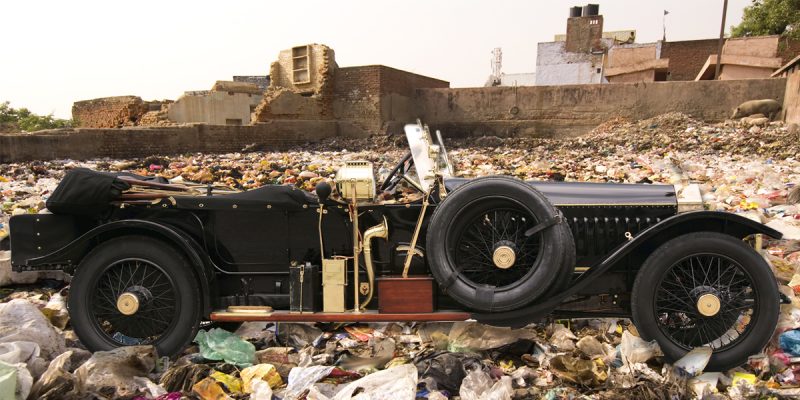When Queen Victoria accepted the additional title of Empress of India in 1876, she made a rare appearance at Parliament, opening it in person as part of the announcement on the 1st of January in 1877 of her change in title. The British had imposed themselves on the subcontinent for a generation by then. It was a relationship that enriched England greatly, but was of course not much loved by most of the natives of India. After the turn of the century, these tensions slowly grew.
Certain stories illuminate the complicated feelings the countries had for each other leading up to independence in 1947. One is a Maharaha’s visit to a Rolls Royce showroom in London.
As the story goes, in 1920, the Maharaja of Alwar, a fabulously wealthy ruler hose name was Jai Singh Prabhakar, visited London, and one day decided to walk around the city “incognito,” wearing ordinary English clothes. Passing by a Rolls Royce showroom, Jai Singh decided to go inside. He asked the staff about the specifications of the Rolls Royce cars and their prices. However, the salesmen just saw a man with the face of an Indian. Ignoring his request for a test drive, the staff went so far as to rudely show the Maharaja out the door.
This treatment naturally made him furious. The Maharaja got back to his hotel and asked for an official visit of the Indian king to the Rolls Royce showroom to be arranged. When he appeared in his formal outfit, dressed in sparkling clothes and jewelry, the Maharaja was welcomed with a red carpet and employees standing on both sides of it paying their respects to the king.
Jai Singh spent more than two hours in the showroom, trying all the six models exhibited. In the end, he purchased all of the cars in the showroom. And he paid for them all right away, including the cash for the costs of delivery. When he returned to India, Jai Singh Prabhakar gave an order to the Municipality in New Delhi to use the cars for collecting garbage. So, there were six brand-new Rolls Royce models sweeping the streets of New Delhi, and carrying the garbage away.
Rolls Royce, a brand in use since 1906 and the number-one car manufacturer in the world in the 1920s, was humiliated and upset about the Maharaja’s treatment of its cars. Apparently, the reputation of the company suffered because of this event in New Delhi. “Oh, the same car used in India for carrying garbage” became a sentence associated with Rolls Royce. The story continues that the King received a telegram with apologies from Rolls Royce for the way the employees behaved towards him. The car executives pleaded for him to stop using the vehicles for transporting garbage and also sent him a gift of another six cars. Satisfied that a lesson had been learned, Jai Singh granted their request.
The story is amusing and it would be incredible if it were a historical fact. However, although it is quite a famous tale and there are people who take it completely seriously, there is no evidence that it is true. If you search for Maharaja Jai Singh Prabhakar on the internet, all you are going to find are articles about the king who used Rolls Royce automobiles to transport garbage. And nobody seems to know how this story was created and how so many people know it.
One explanation is that all this fuss is because of a photograph of a car with two brooms fixed to its front for cleaning a street. The first assumption would be that the car is indeed a Rolls Royce. It is so easy to speculate. In fact, those who have more than a basic knowledge of vehicles will spot that the car in question is not even a Rolls Royce, and although intended for cleaning the street, using it that way is not an offense.
It has been a practical way to clean the city streets of different obstacles, not only in India but in various places around the world. The method was used during World War II to move nails and glass because it protected the vehicles’ tires. However, it is much more entertaining to believe in a story about the snubbed Indian king than search for the facts about street cleaning.
